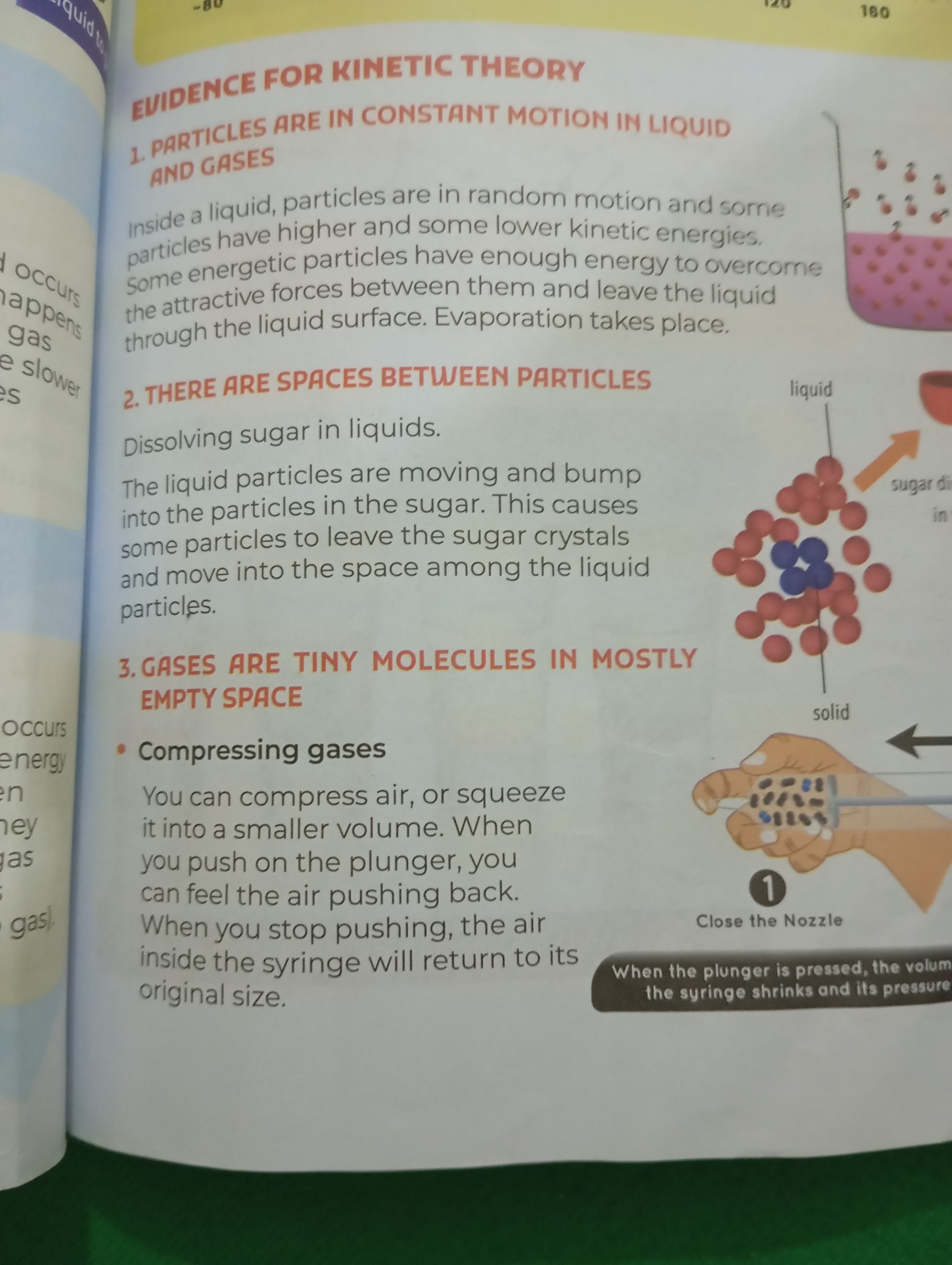
Understand the Problem
The content discusses evidence for the kinetic theory, specifically how particles in liquids and gases behave, including their motion, spacing, and the concept of compressing gases. It explains how liquids allow particles to move and dissolve substances like sugar while gases occupy mostly empty space.
Answer
1. Particles in constant motion; 2. Spaces between particles; 3. Gases are tiny molecules in empty space.
Evidence for kinetic theory includes: 1. Particles are in constant motion in liquids and gases; 2. There are spaces between particles; 3. Gases are tiny molecules in mostly empty space.
Answer for screen readers
Evidence for kinetic theory includes: 1. Particles are in constant motion in liquids and gases; 2. There are spaces between particles; 3. Gases are tiny molecules in mostly empty space.
More Information
Kinetic theory explains the behavior of particles in different states of matter, which helps in understanding physical processes such as diffusion, gas pressure, and temperature. The theory is fundamental in studying thermodynamics and statistical mechanics.
Tips
A common mistake is confusing the particles' behavior in different states of matter. Remember that particles in solids are closely packed, those in liquids are loosely connected, and those in gases are far apart and move freely.
AI-generated content may contain errors. Please verify critical information